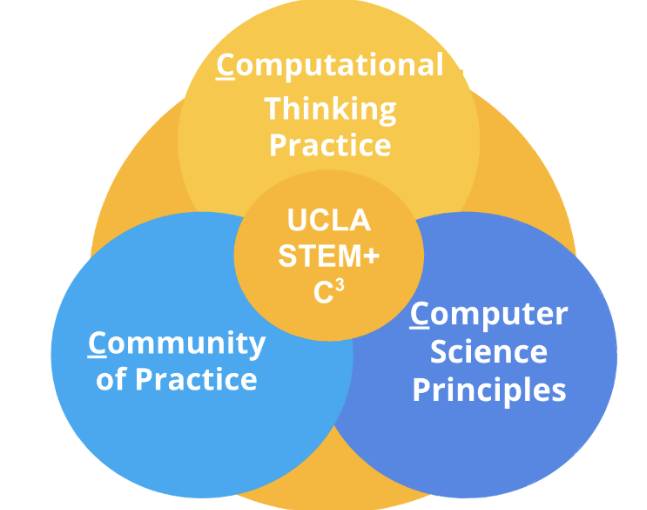Our Approach
UCLA STEM+CS is an innovative teacher residency program that integrates a secondary single-subject credential in math or science and courses for supplementary authorization in computer science. Our approach to computer science is grounded in social justice and equity as we strive to disrupt dominant notions of neutrality in both STEM and CS fields. Instead, we critically analyze our world through a humanizing lens within the CS and STEM fields. The STEM+CS program evolved from the STEM+C3 project that was established in 2020 and is organized around the 3Cs: Computational Thinking for equity in a Community Of Practice toward a new vision of Computer Science, one that is more inclusive and focused on justice.






 Conducted by the STEM+CS (formerly “STEM+C3”) program’s external evaluator, Center For Research On Evaluation Standards And Student Testing (CRESST), this report examines results for Computational Thinking Tasks administered to teacher residents and mentor teachers. Using monthly, bi-annual, and annual meetings, the evaluation team and program stakeholders were able to maximize learning and use about the integration of CT in the teacher residency. This guided the adjustment of CT coursework and support for participants across time. The evaluation also helped to surface the difficulty of taking practices that are already strongly related to math and science instruction and making them explicit.
Conducted by the STEM+CS (formerly “STEM+C3”) program’s external evaluator, Center For Research On Evaluation Standards And Student Testing (CRESST), this report examines results for Computational Thinking Tasks administered to teacher residents and mentor teachers. Using monthly, bi-annual, and annual meetings, the evaluation team and program stakeholders were able to maximize learning and use about the integration of CT in the teacher residency. This guided the adjustment of CT coursework and support for participants across time. The evaluation also helped to surface the difficulty of taking practices that are already strongly related to math and science instruction and making them explicit.
